Coordinatore
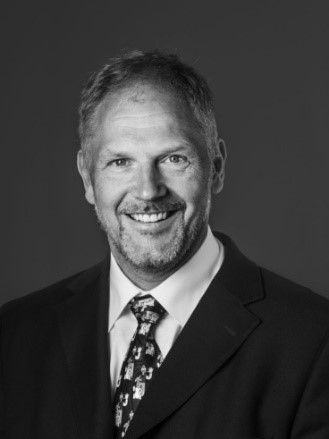
Åke Jernberger
VP of Research and Development
Åke Jernberger is VP of Research and Development at H&D Wireless AB and has been with the company since it was founded in 2009. Åke has a long history leading product development organization, in communications and hi-tech companies like Nokia Networks, Andrew Corporation and ABB Hafo. Åke holds an M.Sc in Electrical Engineering from the Swedish Royal Institute of TechnologyLink al CV
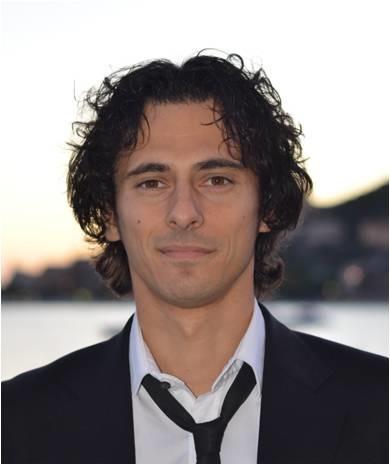
Leonardo Ricotti
Scientific coordinator
Leonardo Ricotti is Associate Professor of Bioengineering and Biorobotics at SSSA and head of the “Micro-nano-bio systems and targeted therapies” Lab at the BioRobotics Institute. He holds a M.Sc. course on “Miniaturized therapeutic and regenerative technologies” and a PhD course on “Micro-nano-bio systems for medical and technological applications”. He has supervised or co-supervised 10 PhD students, working on therapeutic micro-devices, biomaterials and artificial organs, and 30 M.Sc. theses on bioengineering topics. He carries out innovative research efforts at the interface between different disciplines, such as robotics and mechatronics, materials science, molecular biology and biotechnology and he aims at creating innovative (and potentially disruptive) “match points” between different disciplines. He is co-author of ~90 scientific publications (60 on ISI journals), 6 book chapters on micro-nano systems for biomedical applications. He is also inventor of 9 patents. He is Associate Editor of the IEEE Transactions on NanoBioscience and of the IEEE Transactions on Medical Robotics and Bionics. In 2012, he received the “Massimo Grattarola” award for the best PhD Thesis in bioengineering (Thesis title: “Development of bio-hybrid actuators”). In July 2014, he was awarded with the European Biomaterials and Tissue Engineering Doctoral Award. In 2018, he received regional and national prizes as member of the spin-off company Relief s.r.l. He currently coordinates an European project (ADMAIORA – ADvanced nanocomposite MAterIals fOr in situ treatment and ultRAsound-mediated management of osteoarthritis), funded in the H2020 framework.Link al CV
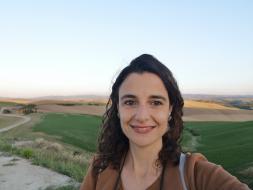
Denise Amram
Data Protection Officer
Denise Amram (PhD in Law, SSSA 2012) is Assistant Professor of Private Comparative Law at LIDER Lab - DIRPOLIS Institute, Scuola Superiore Sant’Anna.Coordinator of the Permanent Observatory on Personal Injury Damages and of the research line ETHOS (EThics and law witH and fOr reSearch), steering committee member of Predictive Justice project, and co-coordinator of the research line Family Law, she participates to several research projects funded under national and EU programs (eg VALKYRIES, LeADS) and she serves as legal-ethical advisor for several research projects including sensitive data.
Affiliate Researcher at the EMbeDS Department of Excellence, she serves as honorary fellow at the University of Pisa. Adjunct lecturer for PhD, graduate and undergraduate courses on Data Protection, Family and Child Law, Ethics and AI, Private Law, Health Law, Comparative Private Law at SSSA, she enriched her experience undertaking teaching and/or research activities both in Italy (University of Pisa, University of Ferrara) and abroad, including France (Université Panthéon-Assas and Université Panthéon-Sorbonne), The Netherlands (Utrecht University), Ireland (University College Dublin), Malta (University of Malta), and USA (Columbia Law School, Harvard Law School Library).
She authored / co-authored ~110 publications in Italian, French, English, and Spanish, including a book and 2 co-editions.
Since 2010 Denise is attorney at the State Bar of Pisa, in 2020 she also received the ISO certified UNI 11697:2017 as Data Protection Officer. In 2018-2021 she served as Data Protection Officer at Scuola Superiore Sant’Anna and Scuola Normale Superiore as well.
Steering committee member for top ranked law journals (e.g. Rivista Italiana Medicina Legale e del Diritto in Campo Sanitario, Opinio Juris in Comparatione, Diritto di Internet, and GenIUS). Her research interests include fundamental rights protection in the fields of data protection law, family law, tort and contractual liability in a national, EU, and comparative perspective.
Link al CV
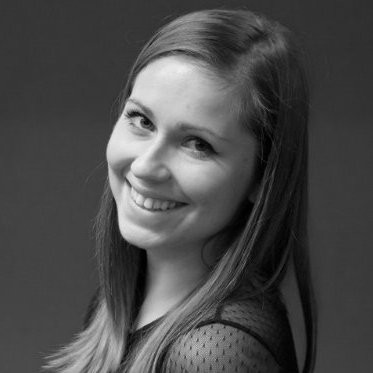
Paulina Galas
Team member
Sc. in Biomedical Engineering. She is experienced in design & development of mechanical components built into Vimex products. She takes part in customization works performed for PLM (Private-Label) customers of Vimex as well as of maintenance of Technical Files covering products manufactured by the company, preparation/reviews of clinical evaluation as well as biocompatibility assessments for manufactured products.Link al CV
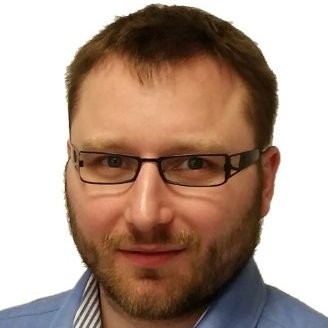
Tomasz Gapinski
Technical Project Manager
Sc. in electronics and telecommunication, specialized in embedded systems and switching mode technology. Actively supervising 6 engineers hired by the company who work in research and development of active medical devices dedicated to endoscopy. He devised several projects concerning active medical products that were successfully developed and that succeeded economically on the market.Link al CV

Krzysztof Lenartowicz
Project Manager
Sc. in Automatization and Robotization in materials processes. Leader of the medical division managing the group of 20 people actively involved in Quality Assurance, Design/Development and Production. He is specialized in the design of fine mechanical elements, 3D CAD design, production planning, and usability aspects for active medical devices. He had gathered his experience in Germany while working for an OEM supplier of Arthrex (as for orthopedics – one of market leaders).Link al CV
IoT TECHNOLOGIES, HANDHELD BIOPRINTING AND SYSTEM INTEGRATION
D5.1 Preliminary software structure
The ADMAIORA system consists of a number of software products run on a plurality of
platforms. The main software components in the project are:
Cloud Server
Patient SmartPhone App
Patient PC Agent
Clinician Web Interface
Knee Brace firmware
In addition, these software products communicate with API’s (Application Programming
Interface) for ready made products:
Activity Wristband
US imaging system/LIPUS system
Balance device (COP)
In this deliverable a description of the software demonstrator is reported, highlighting each
component and its function.
D5.2 Preliminary brace skeleton
In this deliverable, a prototype of a knee brace for treatment monitoring and LIPUS
stimulation is presented.
The purpose of the knee brace is double:
1. To enable the monitoring of the cartilage healing process through different direct (US
imaging of the cartilage), and indirect means (temperature measurements, maximum
bending angle of the knee).
2. To enhance the treatment efficacy by exposing the cartilage to a mechanical stimulus
through Low-intensity pulsed ultrasound stimulation (LIPUS) that has been shown to
promote stem cell differentiation in chondrocytes.
The required LIPUS exposure time is assumed to be compatible with a session in which the
patient is seated, i.e. a completely wearable stimulation gear is not required since the
stimulation does not need to be applied for extended period of time in dynamic conditions.
This means that the brace needs to accommodate the ultrasound transducers for LIPUS but
not the external power signal generator to drive them. The generator can be embedded in a
seat specifically designed to provide the correct knee positioning for the LIPUS stimulation.
The brace design is determined by the constraints of the US imaging examination which needs
to be thorough, as shown in a preliminary study performed with a professional US radiologist,
and by the placement of the ultrasound transducers for the LIPUS stimulation. The clinical
examination was performed with a TELEMED echography system with a linear probe.
However, due to the limited acoustic window to the condyles, it is not possible to have
simultaneously the TELEMED US probe and the LIPUS transducer in place at the same time.
Therefore two different accessories have been added to a commercial brace to enable:
1. a complete US imaging examination (with 8 probe arrangements and 3 different
positions of the leg) thanks to a positioning guide;
2. LIPUS session in a comfortable position with a transducer holder fixed to the brace.
The maximum angulation of the articulation (the angle closest to 180° between the femur
and the tibia) is a good indicator of patient condition improvement over time. It has therefore
been decided to include a goniometer on the brace to enable a precise measurement of the
joint angle.
A second important measurement concerns inflammation, which is related to the joint
temperature. A pocket has been added to the brace to fit in a skin temperature probe.
The brace prototype is still a preliminary design and needs to be further engineered,
integrated and validated in real usage on volunteers. A second iteration will be made on the
brace design once the results of T6.2 (Bioeffects of LIPUS on the nanocomposite construct)
and T4.3 (Investigation of acoustic parameters for in vivo translation) will provide the optimal
size, shape and position of the LIPUS transducers.
A first prototype of the stimulation and monitoring brace has been designed and built. Given
the complexity of the clinical US imaging exam and the fact that the acoustic window for
treatment is the same as the one for imaging, it seems preferable to divide the brace in two
configurations:
A monitoring configuration with removable accessories to perform in a reliable way the
US imaging exam required to assess the healing process in the cartilage;
A stimulation configuration with a support for the two LIPUS transducers.
The patient should also be provided, in the future, with a customized chair to enable proper
positioning of the knee for both the US imaging exam and for the LIPUS stimulation.
The TELEMED US probe does not need to be used on the patient all the time, but needs to be
connected during the imaging session, which is limited in time. The same applies to the LIPUS
transducers. The generator can therefore be attached to the customized chair and connected
for the treatment, only when required. The customized chair will also host the US imaging
system.
The LIPUS transducers are simply positioned in contact with the patient skin. The acoustic
coupling is made through a degassed gel filled membrane sealed on top of the transducer.
The brace also accommodates two different sensors:
A digital goniometer to monitor joint maximum extension;
A wireless temperature sensor to measure skin temperature in order to assess
inflammation.
D5.3 Preliminary foot-controlled pneumatic flow for bioprinting
This deliverable reports a preliminary description of the handheld bioprinting system to be
used for delivering the hydrogel containing ASC cells, carbon nanomaterials and piezoelectric
particles into cartilage defects, by following a foot-controlled pneumatic printing strategy
based on the specifications devised in the deliverable D2.1. Expected results are reported.
The concept design for the DEMONSTRATOR covers aspects related to:
- Determination of primary extrusion method
- Suitable design of the Control Unit to allow driving the extrusion as well as set different
working parameters
- Definition of the cartridge geometry (i.e. commercially available syringe based
solution)
- Design of the extrusion tube and tip geometry
- Design of a footswitch that will allow to use and to operate the system.
The aim is to build a basic system allowing extrusion of the nanocomposite hydrogel in
conditions simulating the final application. The assumption is to regulate the speed of
extruded material by means of 3 independent channels as well as to allow the switching
between different modes (predefined or stored settings) of operation (3 modes for each
channel). Fixing working settings for each of mode will be the matter of further investigations.
The bioprinting system overview is shown in Figure 1.
This deliverable describes the first demonstrator of the platform developed for extruding the
nanocomposite hydrogel. The key aspects (e.g. controlled pneumatic actuation, respect of
dimensional constraints, etc.) were demonstrated. The platform also allowed the real-time
monitoring of working parameters for the proposed system.
A flexible testing stand has been also proposed, which comprises:
- Knee phantom
- Endoscopic camera
- Endoscopic instruments (sheath, scopes, probes, etc.)
- Light source (daylight) with accessories
- Other elements
Such system will allow to investigate and optimize in the next months:
- Software/firmware design and development
- Determination of the bioprinting resolution
- Determination of the influence of the driving pressure on cells viability
- Measurements and testing of working parameters
- Learning about the relation between the compression pressure and shear stress for
particular tip geometries and hydrogel types
